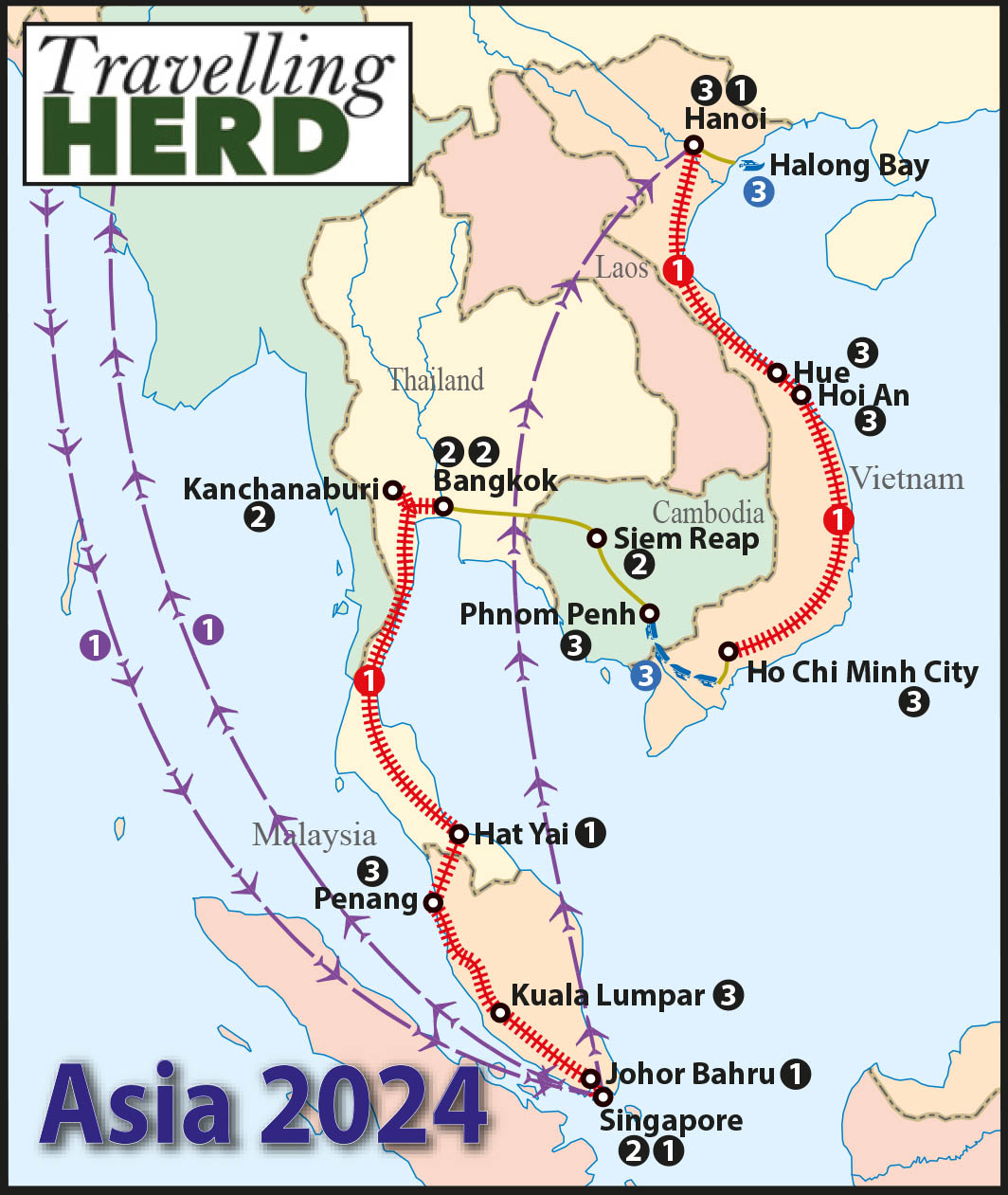Read this blog: The one where Robert gets grumpy with a Vietnamese family
Wednesday 20th to Thursday 21st March 2024
The next leg of our journey involved rejoining the Reunification Express at Da Nang Station and travelling onwards overnight to Hồ Chí Minh City.
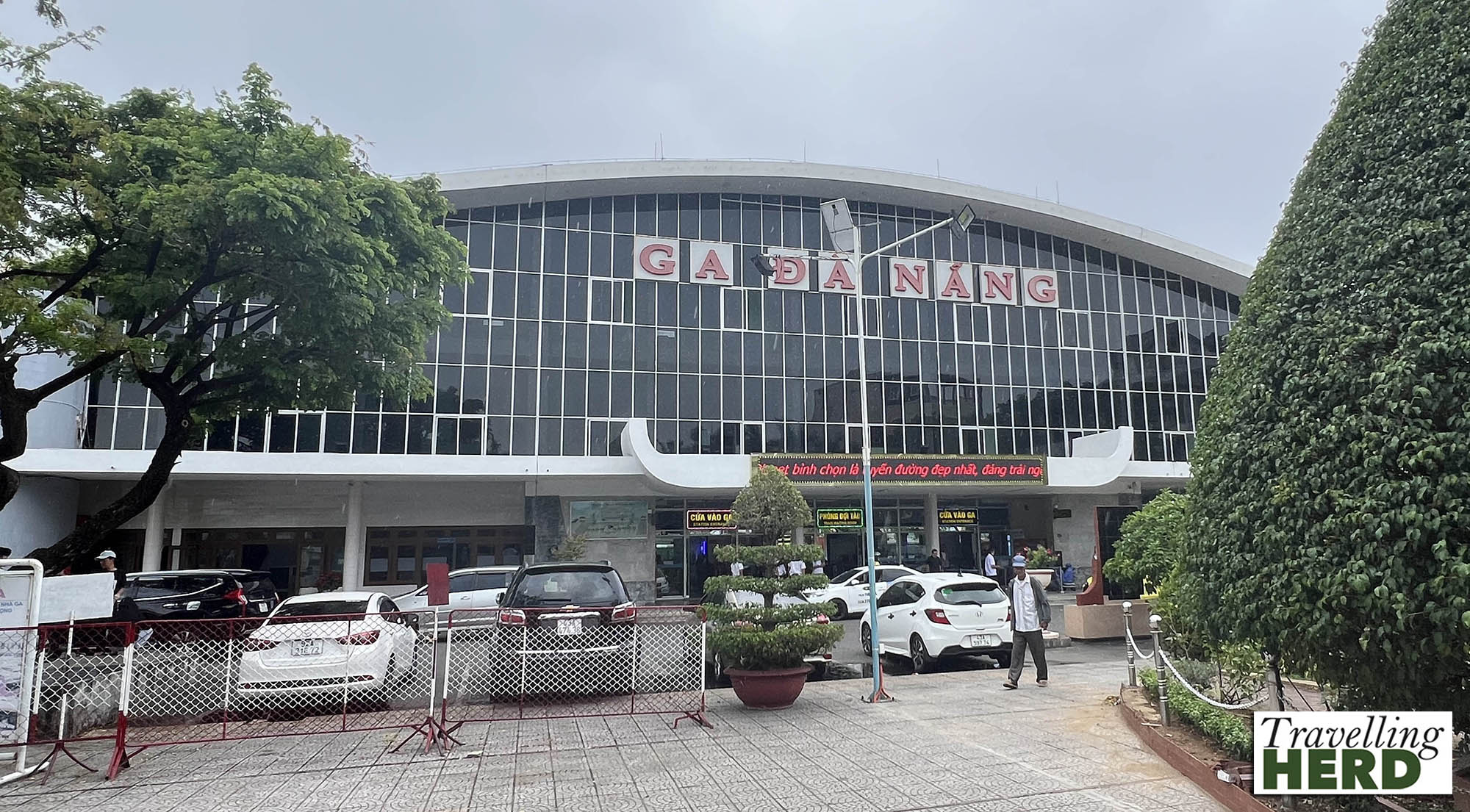
Robert had been unable to book a two berth cabin and so knew we would be sharing with two strangers but we did at least have the two bottom bunks.

However, we failed to allow for the fact that, provided they are below a certain height, children can travel free on Vietnamese railways. A family of four with two young girls joined us at the first stop. Fortunately they immediately clambered up to the top two bunks.
They all went to sleep for several hours in the early afternoon which we thought was strange. The younger child was particularly needy when she woke and whined and squealed loudly. The parents made no effort to quieten her and she may well have been showing off in front of the westerners but those of you who are familiar with Robert’s parenting style [the Victorian maxim “seen and not heard in public” describes it well] will know that this was very unpopular in his sleeping space.
Eventually he remonstrated forcefully with the father which resulted in the whole family moving, in stages, into the next carriage to converse with fellow like-minded Vietnamese. They returned to our berth in time to sleep. When Matilda heard them disembarking around 03:00 she realised why they had all slept earlier in the journey.
When we woke a little later in the morning, we were passing through countryside which was lush and green . . .
. . . even though the clouds, much like Robert faced with a moaning child, looked a bit threatening.
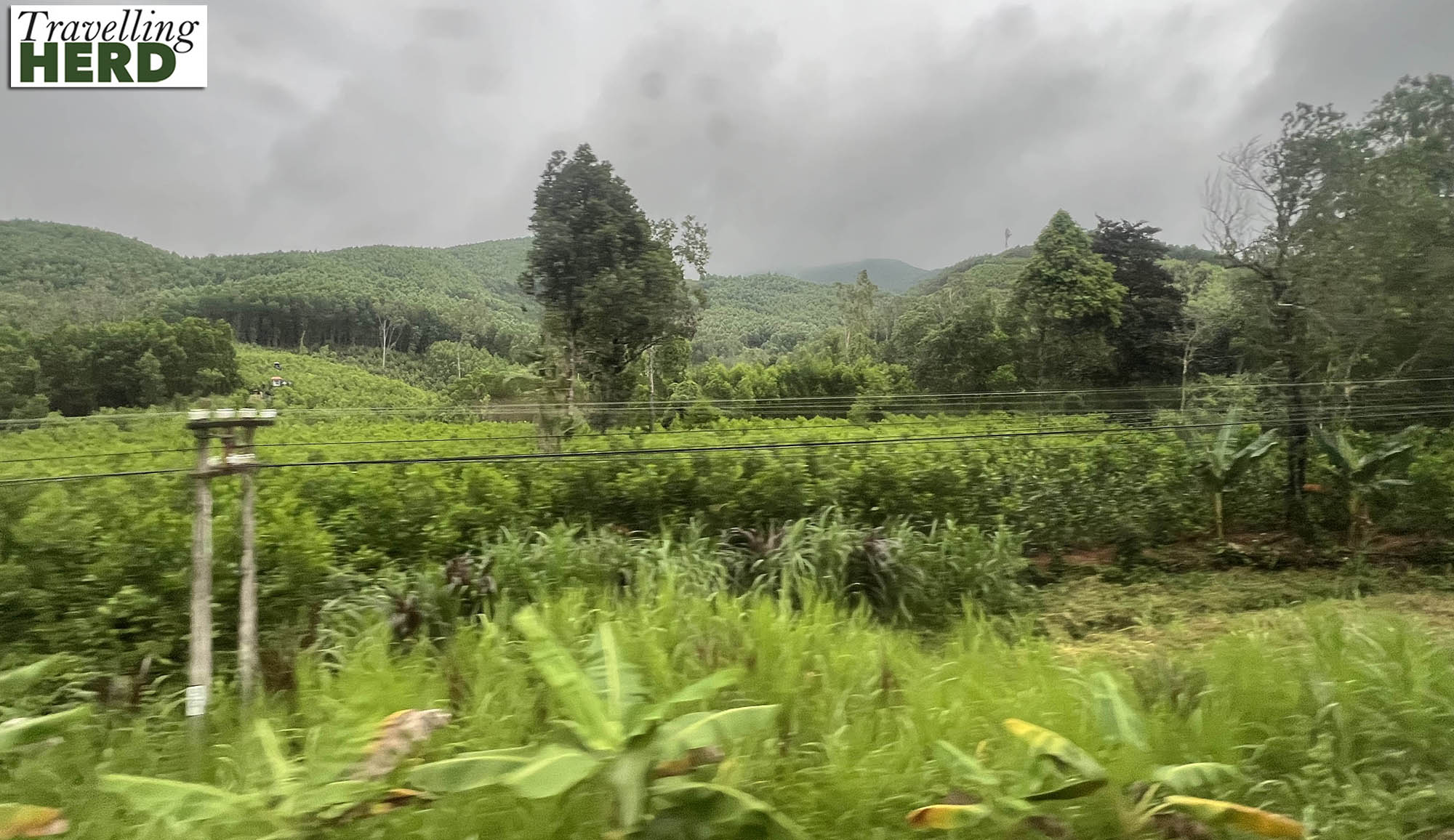
Having arrived in Saigon we deposited our luggage at our hotel. Although Hồ Chí Minh City has been renamed to honour a national hero, many people still refer to the capital as Saigon and some differentiate between the older centre which they call Saigon and the suburbs which they call Hồ Chí Minh City.
We decided we would like to be inside as the heat rose so went to visit the War Remnants Museum.

It was founded on 4th September 1975, about two years after the American forces withdrew and was originally called the American War Crimes Museum.
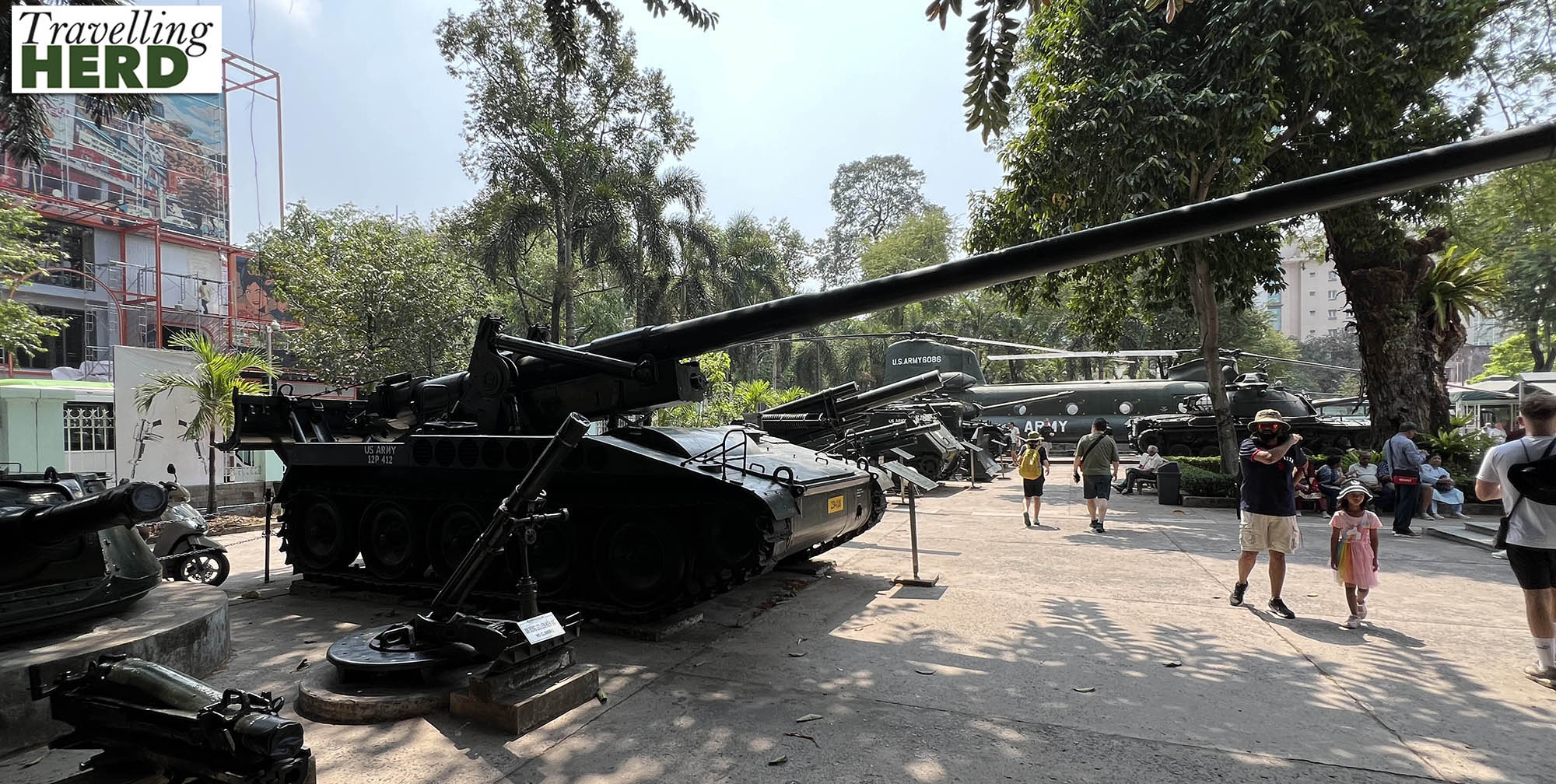
In the grounds outside are various planes and tanks left over from the American War.
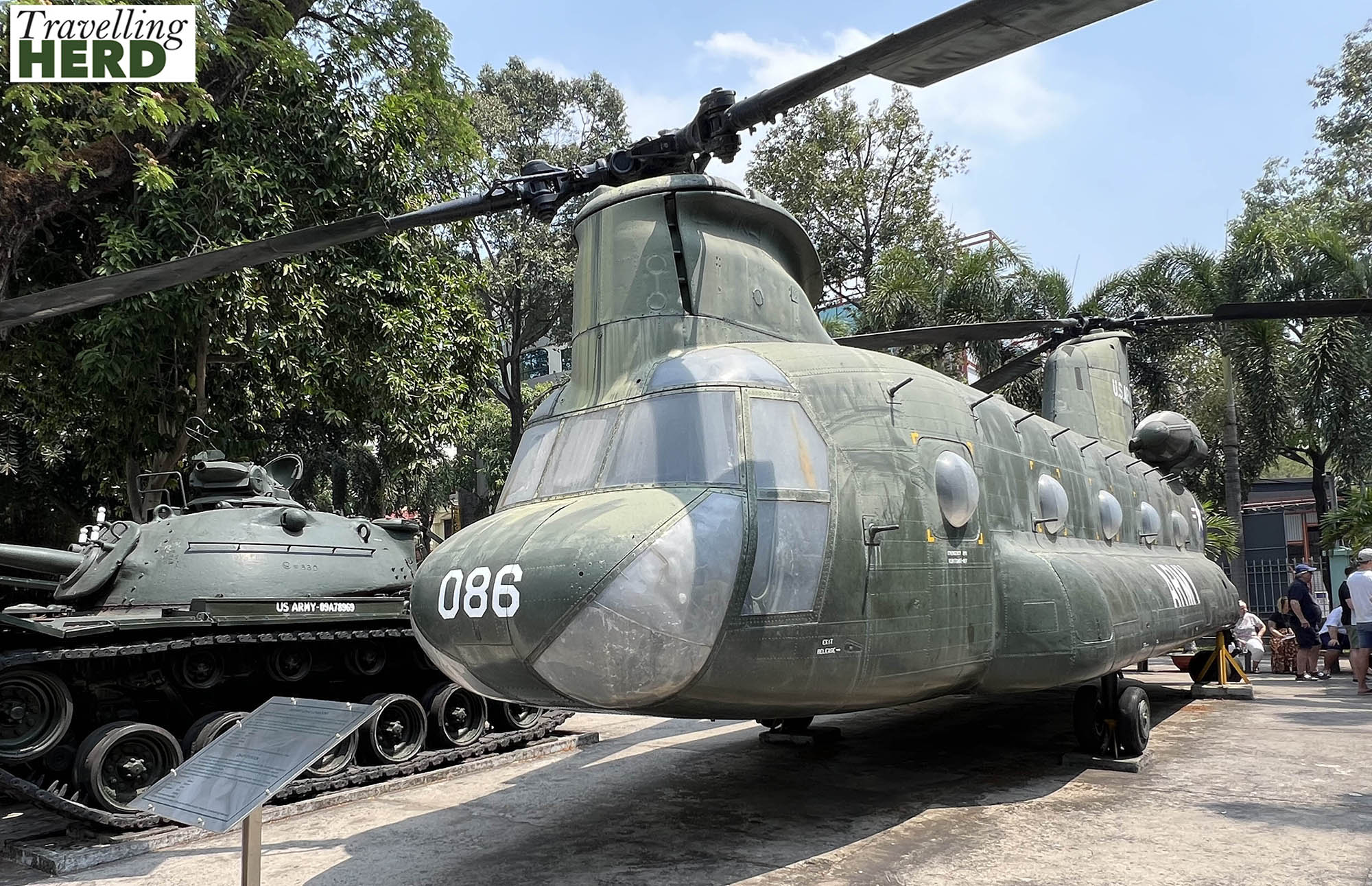
Robert had read an article which recommended starting at the top floor and working your way down suggesting that the exhibits would make more sense in this order. So this is what we did and it worked for us.
On the top floor an exhibition entitled Requiem commemorates the war photographers who sought to document the American War. Photographs taken by North Vietnamese and Viet Cong combat photographers can be seen side by side with those taken by their Western counterparts as they never would have been during the conflict. The display comprises a total of 330 framed pictures taken by 134 photographers from 11 nations who were all killed on assignment. The photos are captioned with the date that either the photographer or the soldier in the photograph or sometimes both died and in many cases this is just days or weeks after a picture was taken.
Elsewhere, sections within the museum are dedicated to Agent Orange during the Vietnam War; War Crimes, Agent Orange Consequences and even experiencing this through photos and documents is distressing: there were some exhibits which Matilda refused to look at. Nevertheless, we would definitely recommend visiting this informative museum.
It seemed almost frivolous to follow this by visiting a pink church, but Tân Định Church, or the Church of the Sacred Heart of Jesus, is simply fabulously pink.
It was built in the Gothic Revival style and is apparently as pink on the inside as it is outside but sadly it was closed for restoration. Matilda felt it was reason enough to return to Saigon to be able to view the interior.
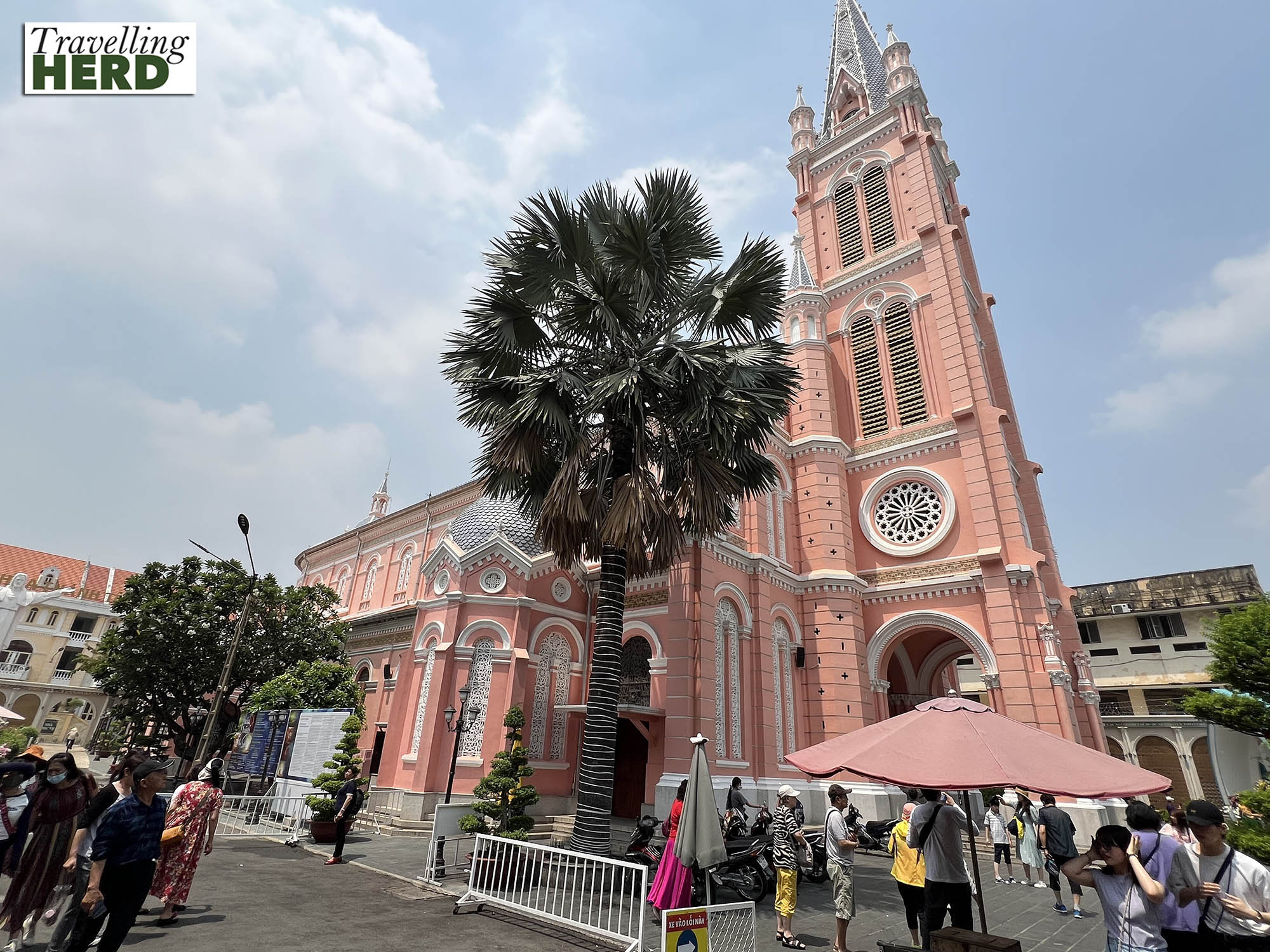
From here we walked to the Central Post Office which combines neo-classical French architecture with Asian decoration.
Built between 1886 and 1891, it also honours those who helped to develop communication technology. On the outside there are several decorative plaques between the windows commemorating inventors, scientists and engineers who made important contributions to communication technologies, including Morse, Ampere, Volta, Ohm, and Faraday.
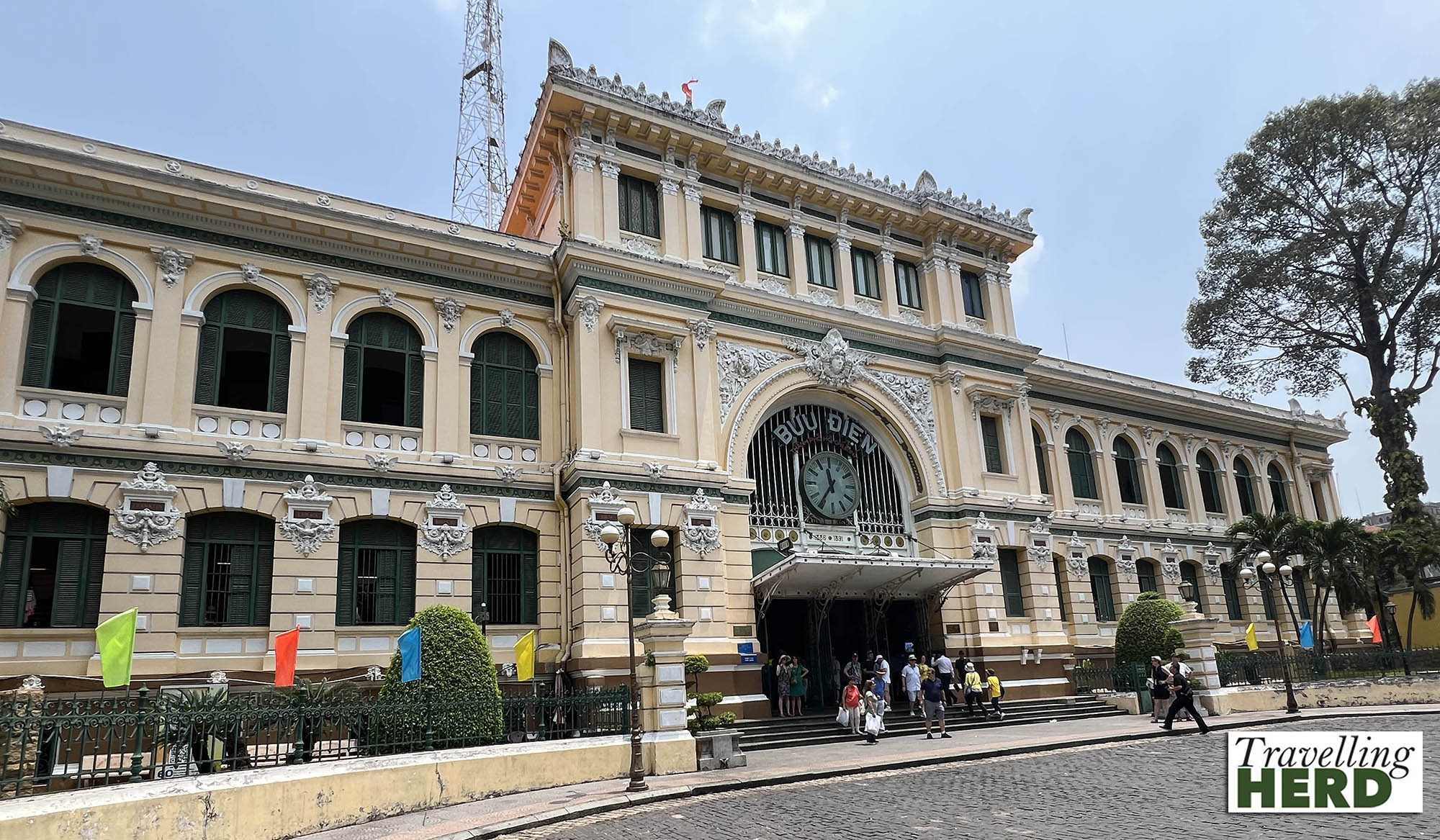
After invading Vietnam in 1863, the French established the Saigon Telegraph Wire Department, which became over time the Saigon Central Post Office. It is often mistakenly attributed to Gustave Eiffel but the building was in fact the final project of Marie-Alfred Foulhoux, who was Saigon’s Architect-in-Chief during the French occupation.
The interior has a fine domed roof supported on columns and there are two painted maps to left and right as you enter [the one on the right just visible in the photo below]. Dating from 1892, the one on the left documents the “Telegraphic lines of Southern Vietnam and Cambodia” while the map on the right is of “Saigon and its surroundings in 1892“.
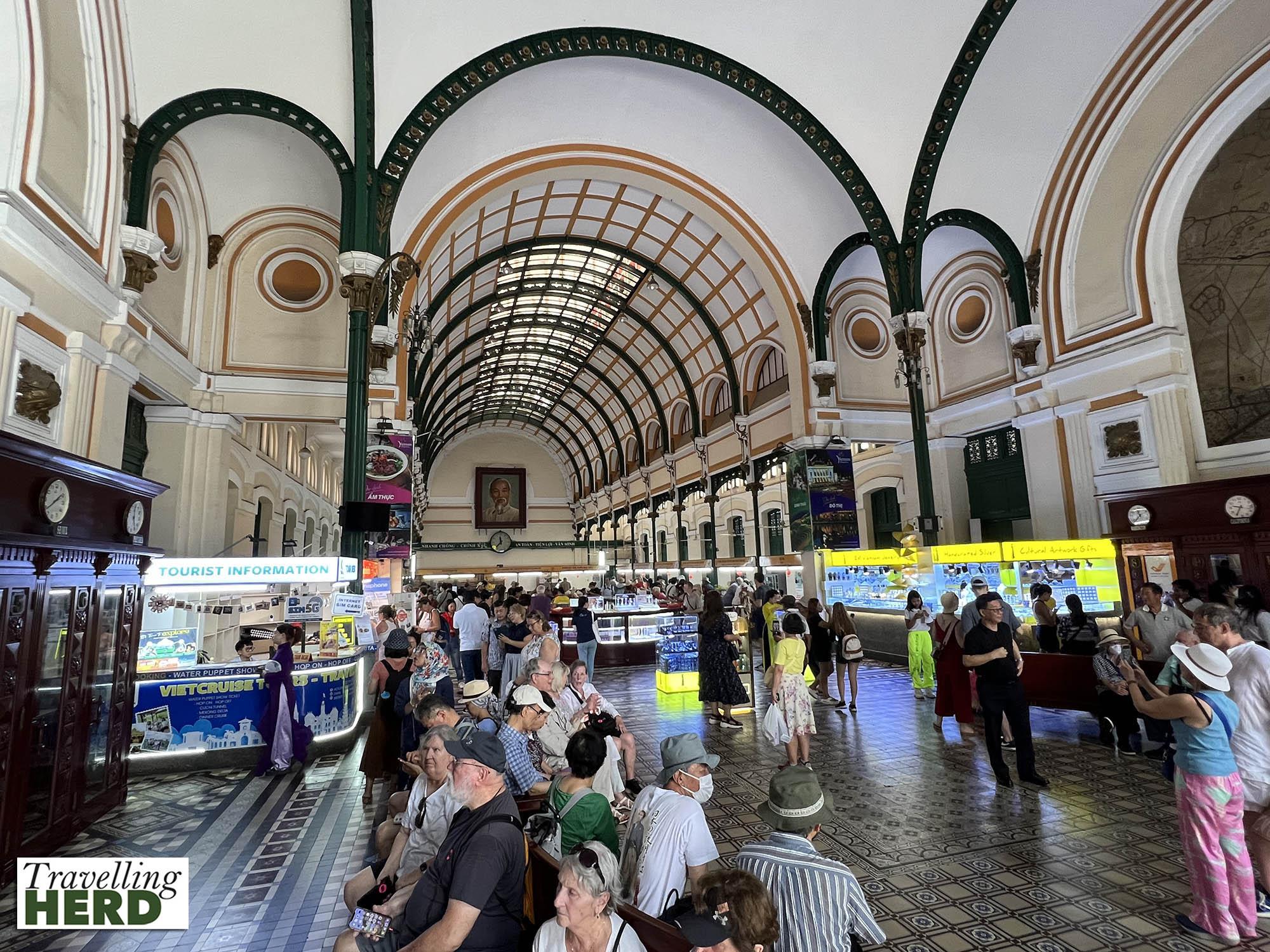
Nearby, Notre Dame Cathedral was also undergoing restoration work on the two 190 feet tall bell towers, which are obscured by scaffolding. Once again, we were unable to enter. We later learned that these works had been going on for at least six years.
Built between 1863 and 1880 by French colonists it was originally called the Church of Saigon [l’Eglise de Saïgon] but the name Notre-Dame Cathedral has been used since 1959.
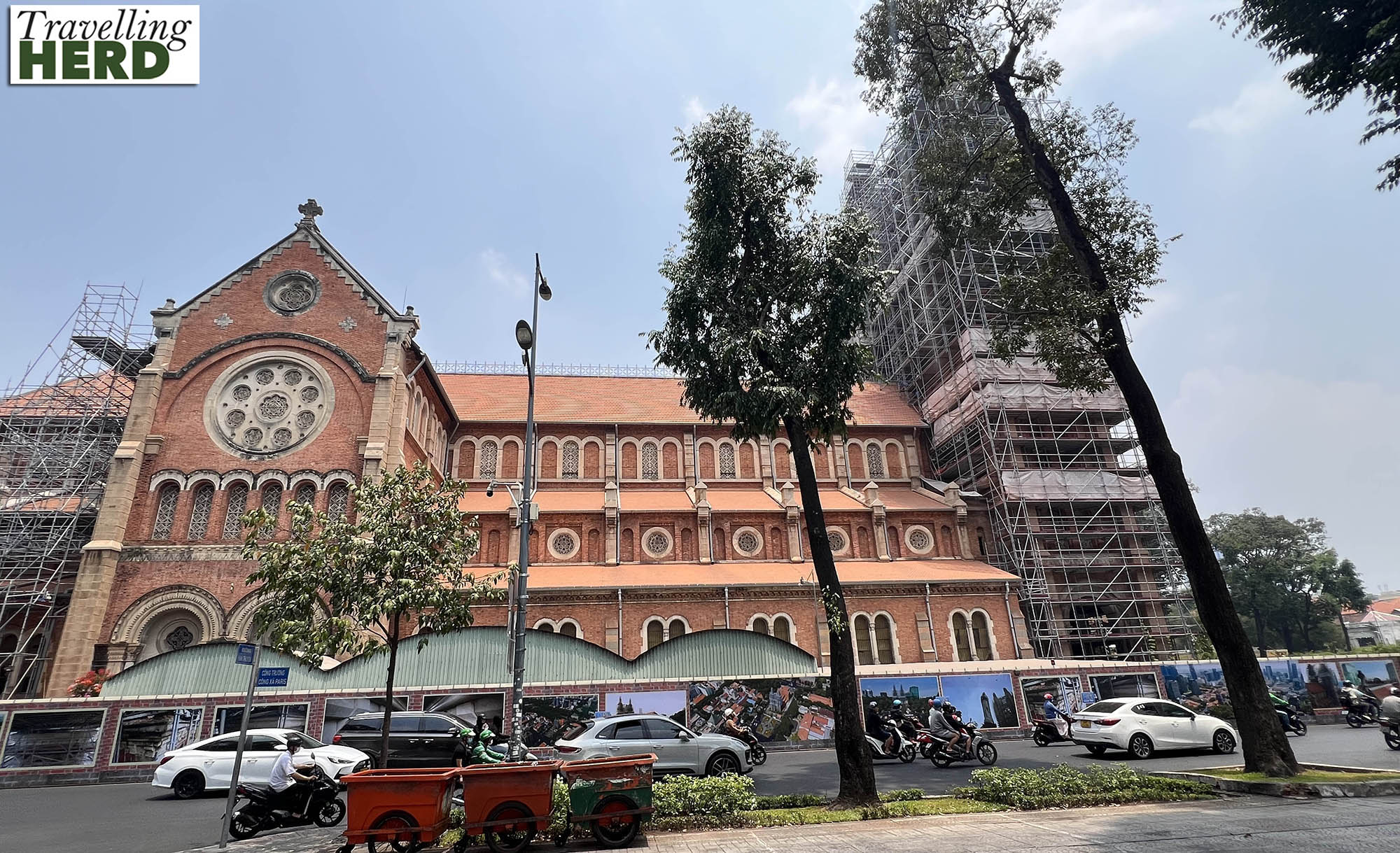
Having failed to gain entry to two of the sights on our list and hoping to escape the heat outside we walked to Dinh Độc Lập, the Independence Palace, which is also sometimes referred to as the Reunification Convention Hall.
The Independence Palace is vast: it stands in a 12 hectare park with a 4,500 sq. metre footprint. When we visited the first floor was closed for a private function so although not a total success, the upper floors were open and as it is 26 metres tall and has 95 rooms there was still plenty to see. The total interior space covers 20,000 sq. metres.
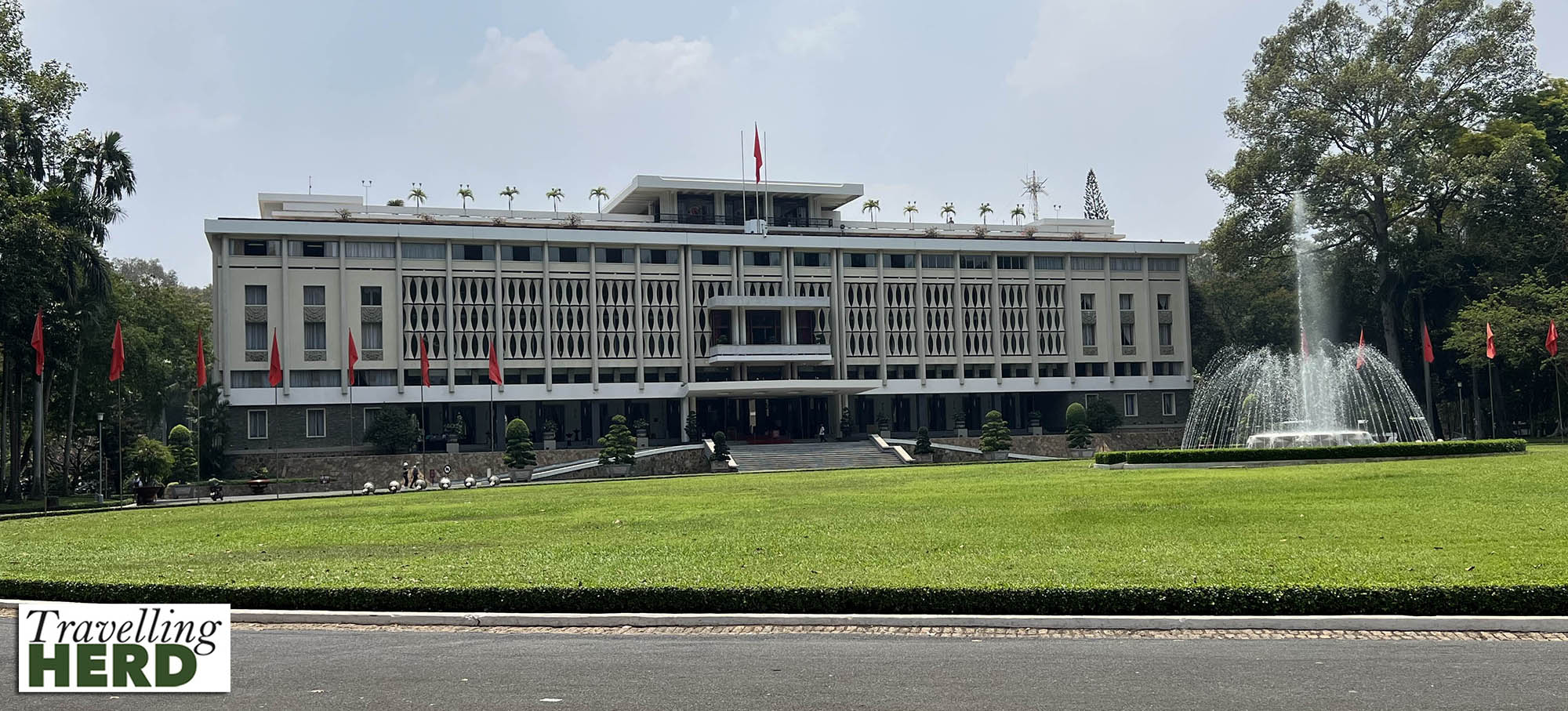
The house of the French colonial Governor General, Norodom Palace, built in 1871 previously occupied this site. The colonial building was renamed the Independence Palace after the 1954 Geneva Accords and became the residence of Not Dinh Diêm, the first President of the new Sai Gön Republic of Vietnam.
However after a bomb attack in February 1962, President Diêm commissioned the brand new structure seen today. It took four years to build but he did not live to see it completed as he was assassinated in 1963, resulting in a six month hiatus in work. His successor Nguyen Van Thieu assumed the presidency in October 1967 and occupied the Palace until his resignation on 21 April 1975.
A week later it was the site of the Fall of Saigon which ended the American War when on 30 April 1975 a North Vietnamese tank crashed through it’s gates. The same model of tank now stands in the grounds to commemorate the Liberation of the South and the reunification of the country
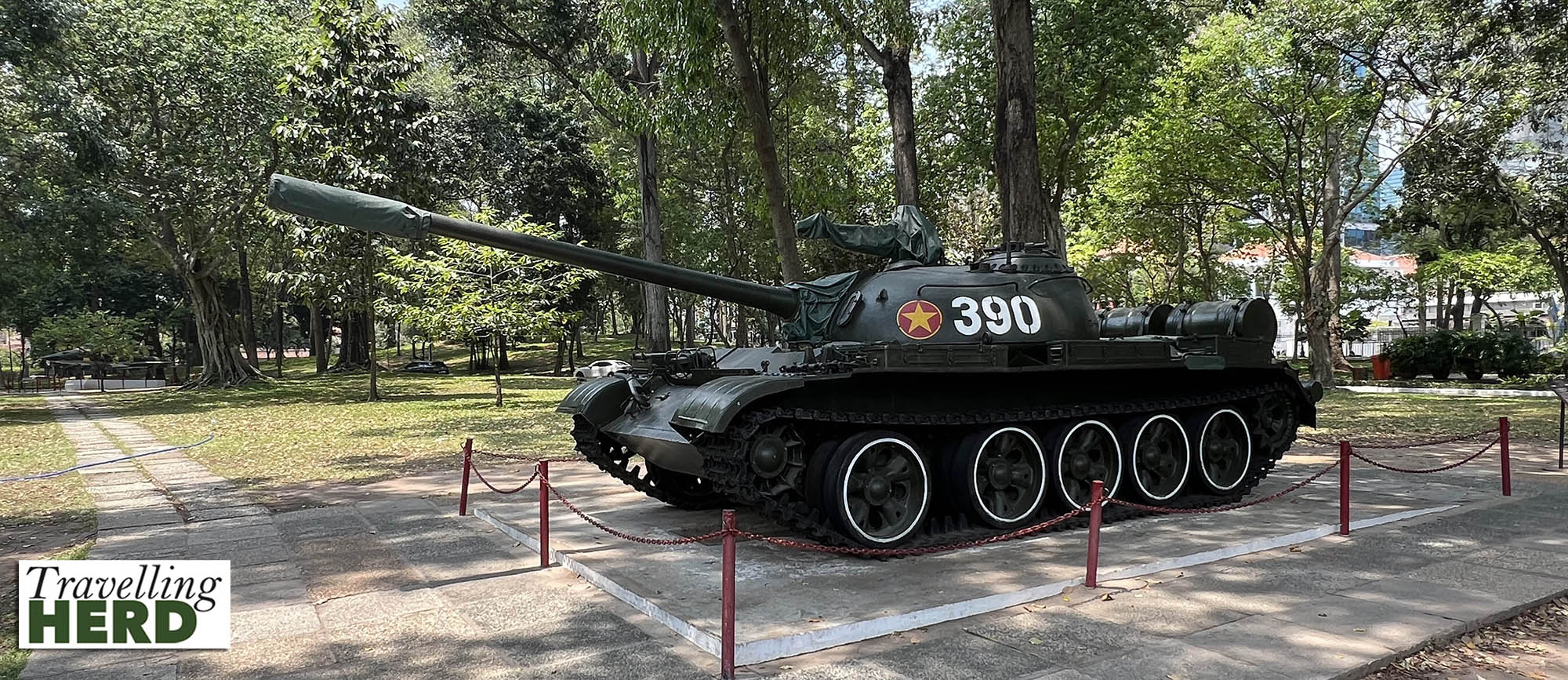
The Palace was designed by Vietnamese architect Ngô Viêt Thy and combines concrete with wooden embellishments in a fusion of modern architecture with traditional Vietnamese style. The Independence Palace was first opened to the public in 1990. and visitors can now enjoy the view from the balcony.
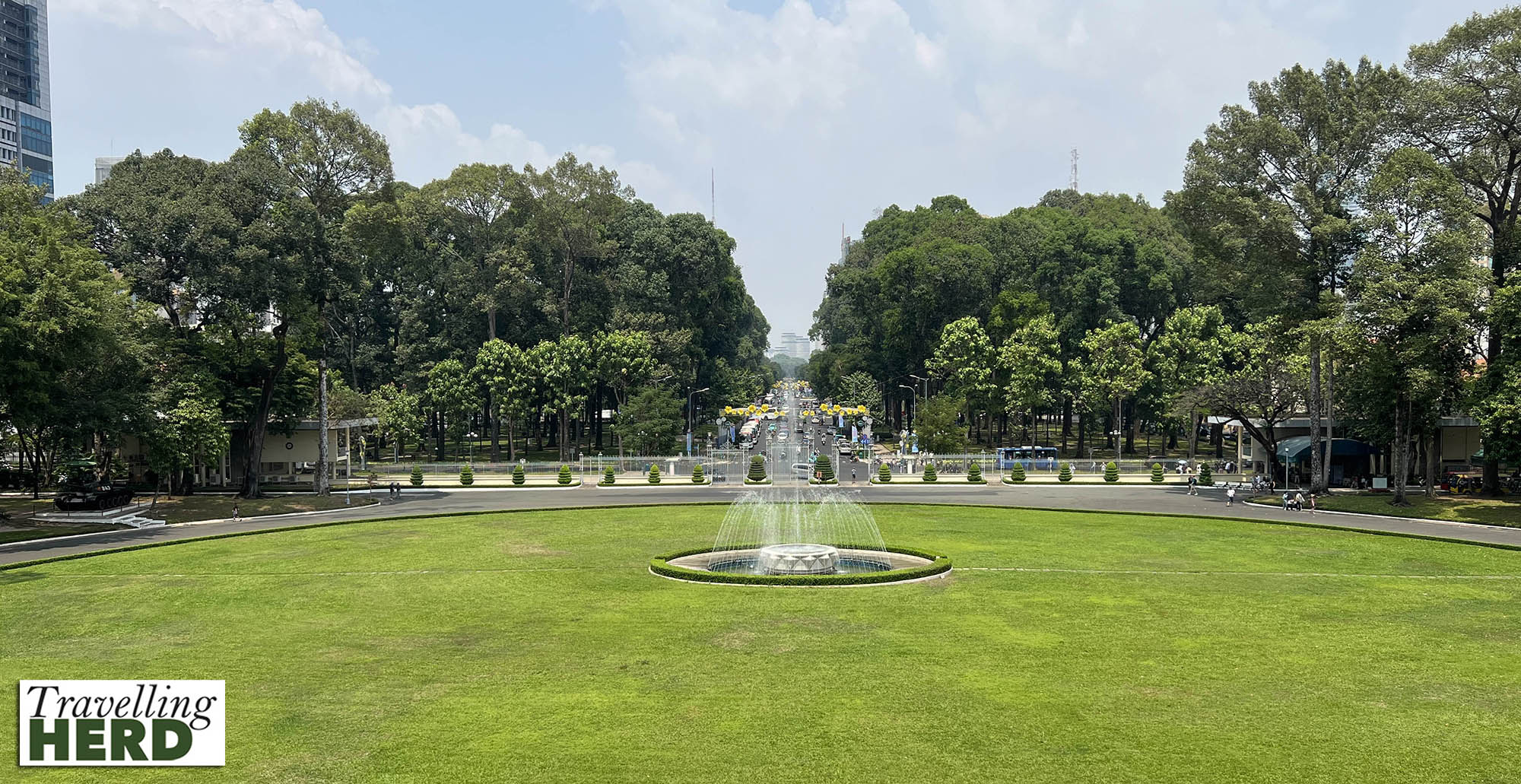
Many of the rooms have opulent furnishings and were used for entertaining ambassadors and visiting heads of state.

A helicopter stands on the roof and we later discovered that we could just see this from the roof top pool at our hotel [see feature photo].
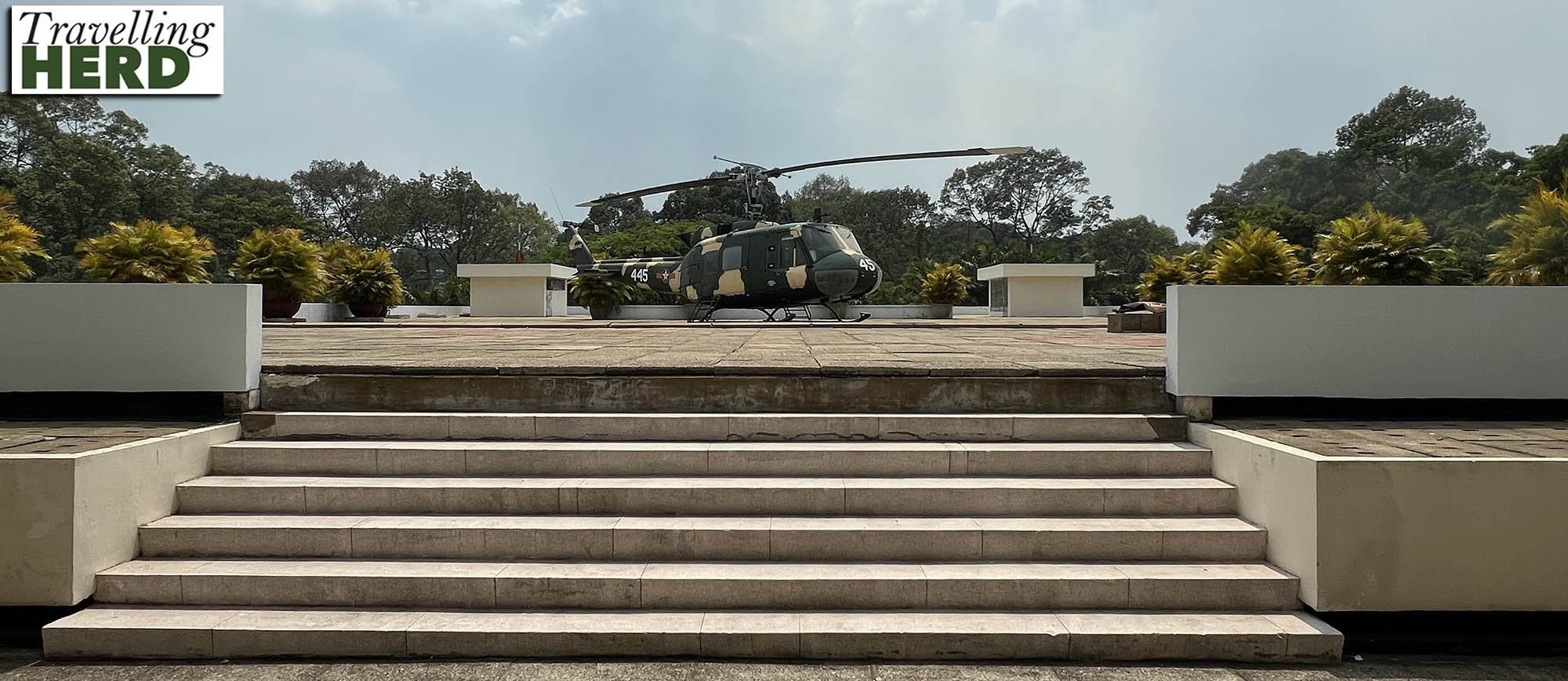
The Palace extends down as well as up and includes an underground bunker on several levels with a command centre 0.6m below ground and a maximum security shelter at a depth of 2.5m. Perhaps appropriately since it was intended to provide a safe place for key personnel, we had some difficulty finding it but did eventually discover the way in.
The bunker complex took three months to excavate and build. Narrow passages connect the rooms which are protected by reinforced concrete walls capable of withstanding a 500kg blast in the command centre and up to a 2,000kg explosion in the maximum security shelter. The telecommunication equipment was installed by the Americans in the 1960s.
A staircase gave the President direct access to the shelter from his office on the second floor and he and his family took refuge in the shelter during the bombing of the palace on 8th April 1975.
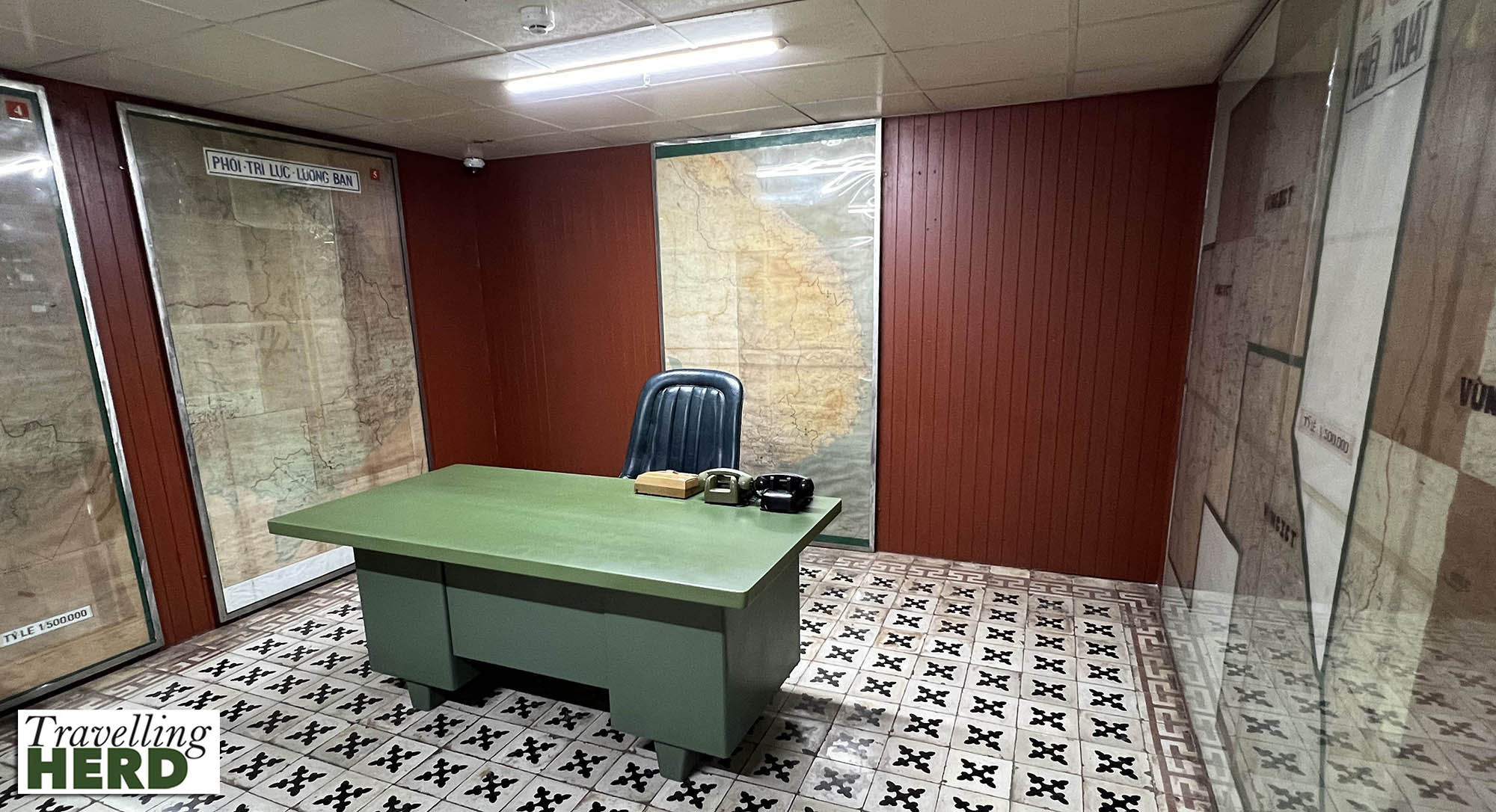
We felt we had absorbed enough culture at this point and as we would now be able to check into our hotel we returned to discover that we had a room without windows. When Robert queried this, he was told that very few of the rooms did have windows as the building was surrounded by others and effectively in a terrace. However, it did have a rooftop pool and we went up for a dip to lower our core body temperature and found we could see into the grounds of the Independence Palace with the helicopter on the roof. We decided that a lack of natural daylight might result in a lie in.
Feeling a lot more chilled, we set off to meet Joe, a friend and ex-colleague of Matilda’s now living and working in Saigon. He recommended meeting for a meal at a place called Vo Roof. We should definitely have taken a ‘Dish of the day’ photo here as the food was both tasty and well-presented but unfortunately we were too busy chatting and forgot. So instead we have included our snacks for the train.
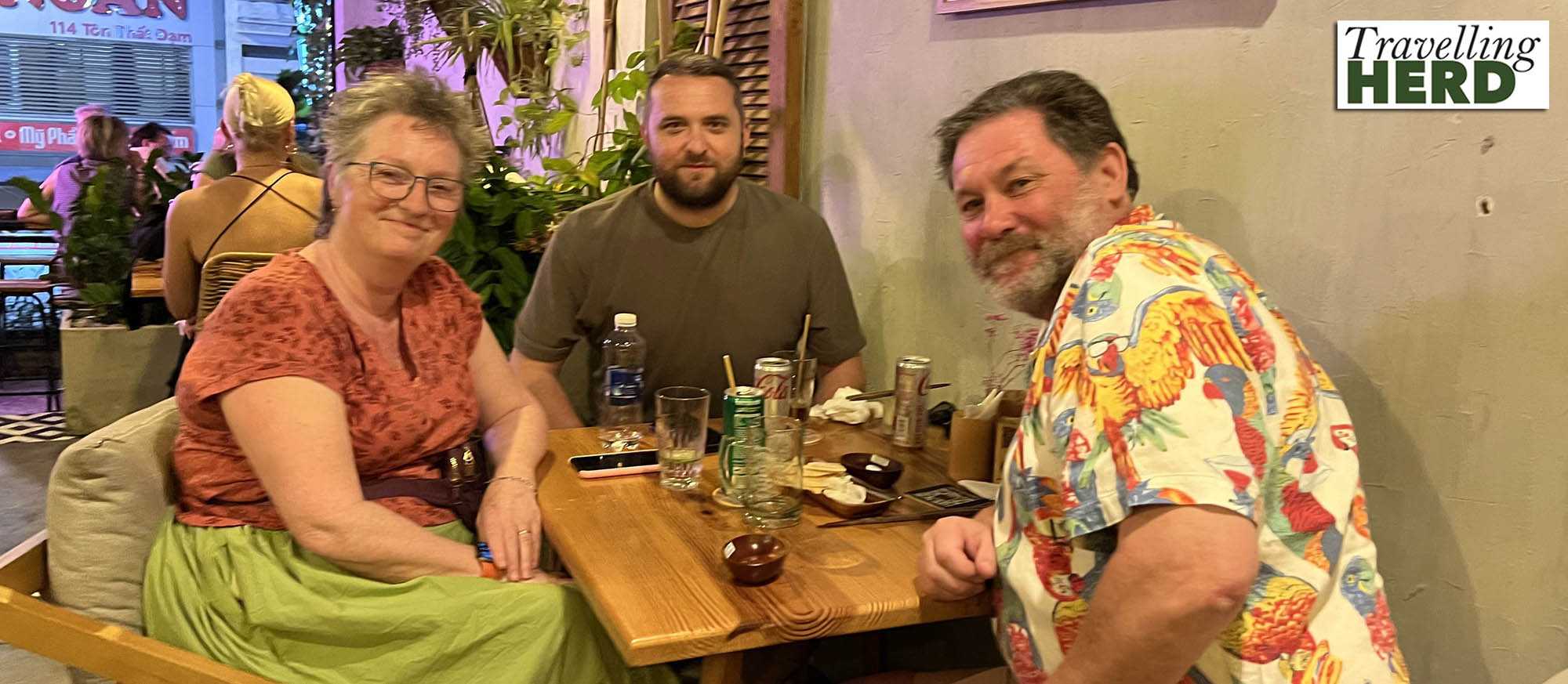
It was so lovely to see Joe and catch up and we discovered that we had a good view from Vo Roof of the Saigon Skydeck on the Bitexco Financial Tower which we planned to visit the following day. He also gave us several insights into life in Vietnam and explained the use of the dehydrated face towels which Matilda had mistaken for peppermints [see Video of the day]. She was very glad she hadn’t absent-mindedly popped one in her mouth to suck – it would not have ended well.
Thank you for a lovely evening, Joe. Hope to catch up again if we come back this way.

Video of the day:
Selfie of the day:
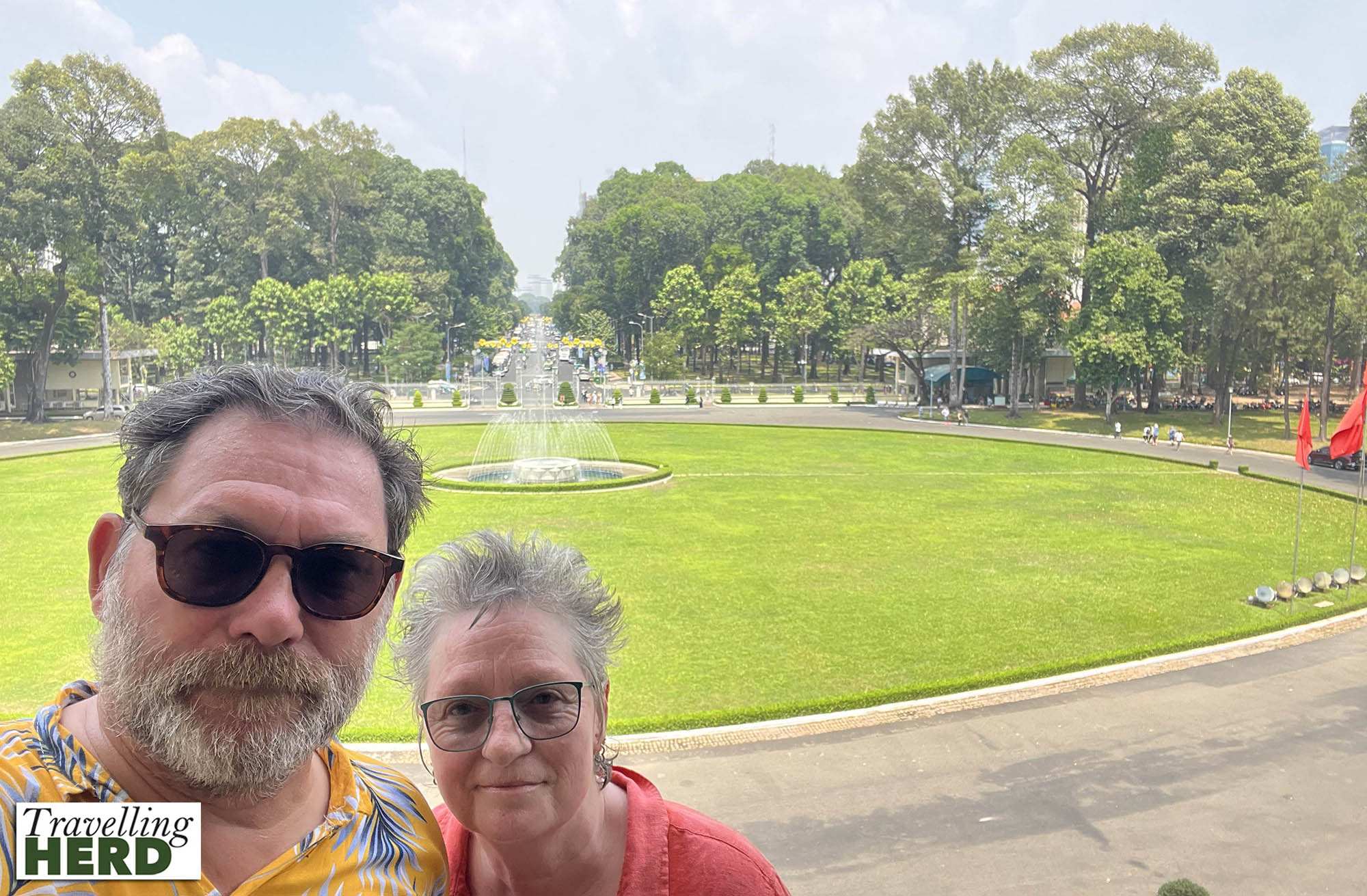
Dish of the day:

Route Map:
